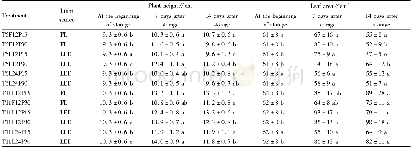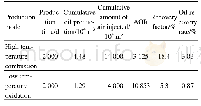《Table 1 Sample information for low temperature thermochronology in the southern Ordos Basin.》
 提示:宽带有限、当前游客访问压缩模式
提示:宽带有限、当前游客访问压缩模式
本系列图表出处文件名:随高清版一同展现
《"Latest Triassic to Early Jurassic Thrusting and Exhumation in the Southern Ordos Basin, North China: Evidence from LA-ICP-MS-based Apatite Fission Track Thermochronology"》
In general,the timing of tectonic contraction and associated hanging-wall exhumation is synchronous with the onset of rapid cooling.Therefore,reasonable sampling for low-temperature thermochronology study could provide the tightest constraint on timing of tectonic contraction and thrust fault activity.In this study,9sandstone samples(Table 1;Fig.3),3 kg each,were collected from both hanging-wall and foot-wall of the LSF in the southern Ordos Basin.Enough apatite grains for AFT analysis were successfully separated from 4 of 9samples,using standard heavy liquid and magnetic separation techniques.Three of them were collected at the Kouzhen section,including two hanging-wall samples and one foot-wall sample;while another foot-wall sample is located 100 km apart from Kouzhen section,albeit seemed slightly distant,deformation structure between them can be ruled out due to the lack of transverse structure in the southern Ordos Basin(Zhou Dingwu et al.,2002;Qi Kai et al.,2017).According to apatite yields and quality,apatite fission track analysis was conducted on four samples by LA-ICP-MS method at University of Melbourne,following analytical details based on Gleadow et al.(2015).Experimental procedures for this method are described briefly below.
| 图表编号 | XD0017174800 严禁用于非法目的 |
|---|---|
| 绘制时间 | 2018.08.01 |
| 作者 | ZHANG Shaohua、LIU Chiyang、YANG Minghui、BAI Jianke、WANG Jianqiang |
| 绘制单位 | State Key Laboratory of Continental Dynamics, Department of Geology, Northwest University、State Key Laboratory of Continental Dynamics, Department of Geology, Northwest University、State Key Laboratory of Petroleum Resource and Prospecting, College of Geos |
| 更多格式 | 高清、无水印(增值服务) |
查看“Table 1 Sample information for low temperature thermochronology in the southern Ordos Basin.”的人还看了
-

- Tab.2 Statistical description of growth traits, SGR and AGR for L.vannamei under low temperature conditions
-

- Table 1 Effects of low temperature and poor light storage environments on the morphological indicators of pepper seedlin





